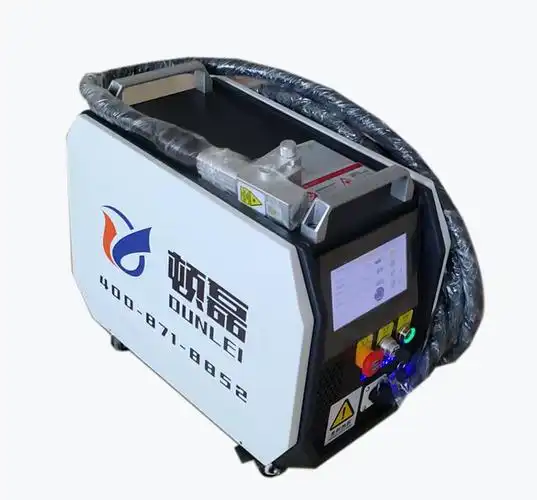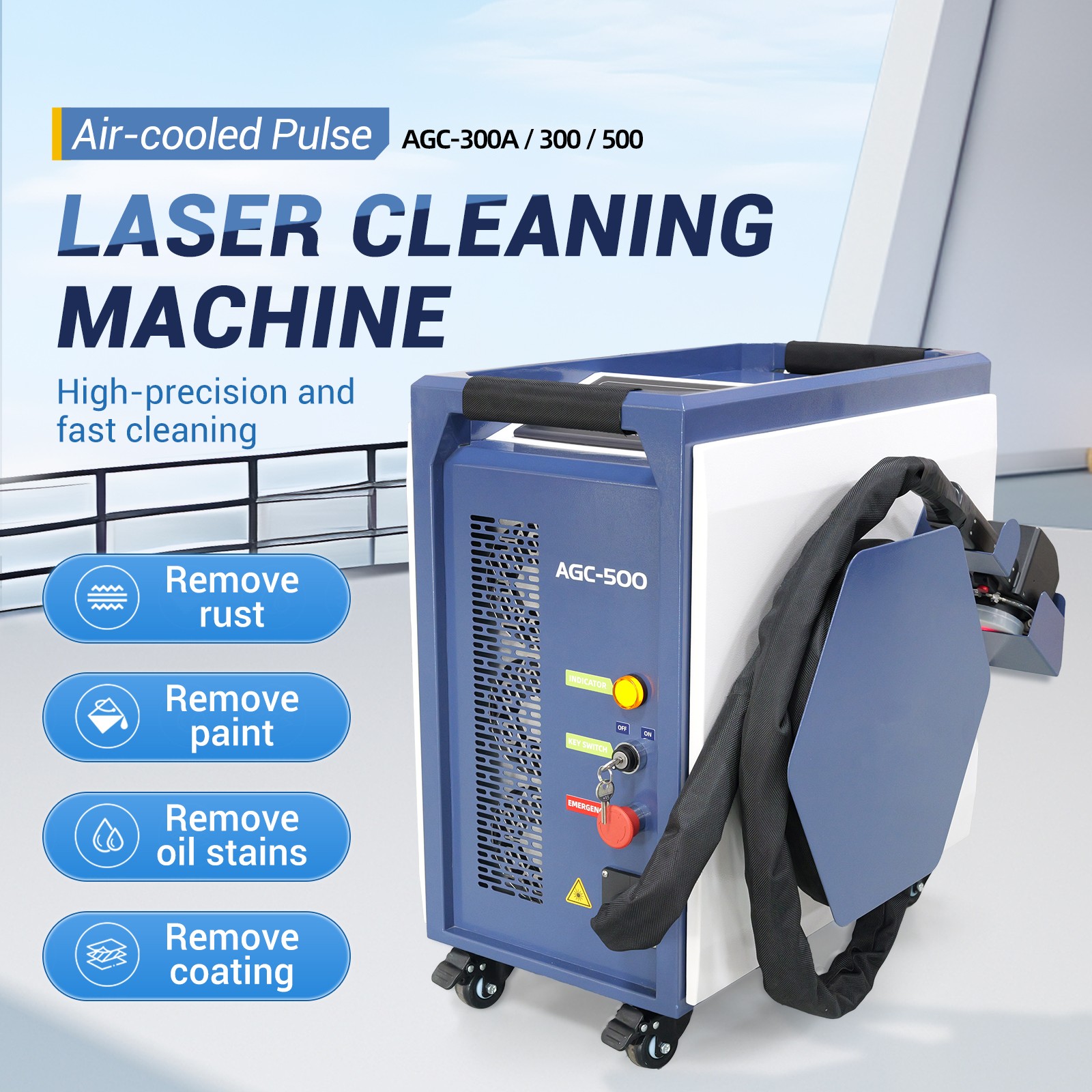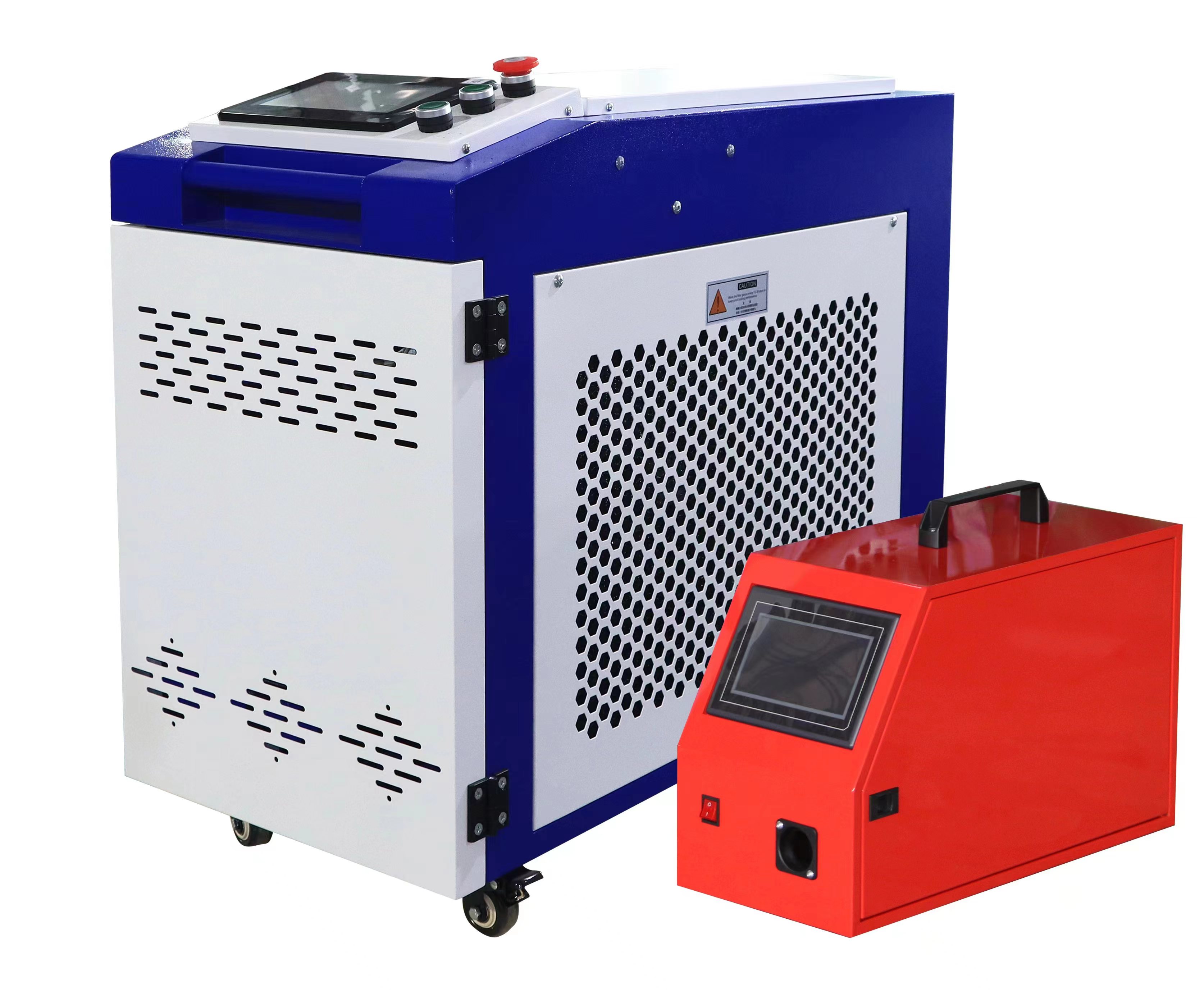With over fifteen years immersed in metal restoration and surface treatment, I’ve handled tools of all kinds, each with its own story of durability. Among the newer innovations, laser rust removal machines have stood out for their precision and green credentials. A question I hear often from DIY enthusiasts, small workshop owners, and curious tinkerers is: How long does a laser rust removal machine last? Lifespan is a make-or-break factor when deciding whether to invest in one. In this article, I’ll share my hands-on insights, break down the factors that affect durability, and offer tips to keep your machine running for years, helping you decide if it’s a smart buy for your needs.

Understanding the Lifespan of Laser Rust Removal Machines
The lifespan of a laser rust removal machine hinges on its core components, how often it’s used, and how well it’s maintained. At its core, the machine relies on a laser source (typically a fiber laser), a cooling system (air or water), a laser head with optical lenses, and electronic controls. The laser source is the heart of the machine, and its durability often defines the overall lifespan.
From my experience and industry data, a high-quality laser rust removal machine’s laser source can last 10,000 to 100,000 hours of active use, which translates to roughly 5-20 years for frequent users or even longer for occasional home use. Other parts, like the lens or cooling system, may need periodic maintenance or replacement, but these are minor compared to the laser source itself.
My first encounter with a laser rust removal machine was at a trade show a few years ago, where a 100W model effortlessly polished a rusty steel plate to a mirror finish. Since then, I’ve used several models, and their longevity has impressed me—when cared for properly.
Key Factors Affecting Lifespan
Several elements determine how long your laser rust removal machine will last. Here’s what I’ve learned from years of use and conversations with manufacturers:
Laser Source Quality: Reputable brands like Raycus, IPG, or JPT use high-quality fiber lasers that last 50,000-100,000 hours. Cheaper, lesser-known brands may only offer 10,000-20,000 hours.
Usage Frequency: Heavy daily use (e.g., 4-5 hours) will wear the machine faster than occasional home use (a few hours monthly). My 50W unit, used sparingly, is still in top shape after three years.
Maintenance Habits: Regular lens cleaning and proper cooling system care can significantly extend component life.
Operating Environment: Dust, humidity, or extreme temperatures can strain the machine. I once saw a unit fail early in a dusty workshop due to neglected maintenance.
Power Settings: Constantly running at maximum power can shorten the laser source’s life. I always use the lowest effective setting for each task.

My Real-World Experience
Let me share a few stories from my own use to give you a sense of what to expect.
Case 1: Home DIY Use
Three years ago, I picked up a 50W portable laser rust removal machine for about $550 to tackle rusty garden tools and bicycle parts at home. I use it roughly twice a month, with sessions lasting 20-30 minutes. The laser source is rated for 50,000 hours, and at my pace (about 12 hours/year), it could theoretically last over 4,000 years! Realistically, I expect 10-15 years, assuming other components hold up. So far, I’ve only replaced the protective lens once ($40) after two years due to minor scratches from dust buildup.
Case 2: Small Workshop
A friend running a motorcycle restoration shop uses a 200W laser rust removal machine for 3-4 hours daily. His Raycus model, rated for 100,000 hours, has been running for four years (about 5,000 hours) without a hitch. He’s replaced the lens twice ($100 each) and refills the water-cooling system yearly ($10). He estimates another 15-20 years of use, making it a worthwhile investment.
Case 3: A Maintenance Lesson
Early on, I made a mistake with my 50W unit by using it in a dusty garage without cleaning the lens afterward. Within a year, the lens was scratched, reducing efficiency. Replacing it cost $40, and since then, I’ve been diligent about cleaning the lens after every use. This taught me that maintenance is critical to a long lifespan.

Lifespan Comparison Table
To put the lifespan in context, I’ve compared laser rust removal machines with traditional methods like sandblasting and chemical cleaning:
| Method | Core Component Lifespan | Equipment Lifespan (Years) | Maintenance Needs | Best Use Case |
|---|---|---|---|---|
| Laser Rust Removal | Laser source: 10,000-100,000 hours | 5-20 years, depending on use | Lens cleaning, occasional coolant refill | Home DIY, small workshops, precision parts |
| Sandblasting | Compressor/nozzles: 1-5 years | 3-10 years with heavy use | Frequent nozzle replacement, abrasive disposal | Large industrial projects, heavy rust |
| Chemical Cleaning | No equipment lifespan (manual) | N/A (depends on tools) | Ongoing chemical purchases, waste disposal | Small-scale, light rust |
The table shows that laser rust removal machines offer a significantly longer lifespan than sandblasting equipment, especially for light-to-moderate use, and they eliminate the recurring costs of chemical cleaning.
Tips to Maximize Lifespan
Based on my experience, here are practical ways to ensure your laser rust removal machine lasts as long as possible:
Choose Quality Brands: Opt for machines with reliable laser sources like Raycus or IPG. They’re pricier but far more durable.
Clean the Lens Regularly: Wipe the laser head lens with a microfiber cloth and lens cleaner after each use to prevent dust or splatter damage.
Use Optimal Power Settings: Select the lowest effective power for each job to minimize wear on the laser source.
Maintain the Cooling System: For water-cooled models, check coolant levels annually and use distilled water to avoid scaling. Air-cooled models need occasional fan cleaning.
Store Properly: Keep the machine in a dry, dust-free environment to protect electronics and optics. I store mine in a sealed case when not in use.
Follow Safety Guidelines: Avoid operating in humid or dusty conditions, and always wear protective goggles to prevent accidental damage.
These habits have kept my 50W unit in excellent condition for three years, with only minimal maintenance costs.

Long-Term Cost and Lifespan Analysis
To show how lifespan impacts value, consider a small workshop cleaning 50 metal parts monthly:
Laser Rust Removal: A $550 50W machine with a 50,000-hour laser source, used 12 hours/year (0.24 hours/part × 50 parts × 12 months), could last over 4,000 years theoretically, or practically 10-15 years. Annual maintenance (lens replacement, $40 every 2 years; coolant, $10/year) totals ~$30/year. First-year cost: $580; subsequent years: $30.
Sandblasting: A $300 machine lasts 3-5 years with heavy use. Annual abrasive costs ($3/part × 50 parts × 12 months = $1,800) and nozzle replacements ($50/year) total ~$2,150/year.
Chemical Cleaning: No equipment cost, but chemicals ($1.50/part × 50 parts × 12 months = $900) and waste disposal ($15/month × 12 = $180) total ~$1,080/year.
Laser rust removal machines provide exceptional durability and low maintenance costs, making them a cost-effective choice for frequent users despite the higher initial price.
Common Lifespan Challenges and Solutions
Here are some issues that can shorten a machine’s life and how to address them:
Lens Damage: Dust or splatter can scratch the laser head lens, reducing performance. Solution: Clean after every use and degrease oily surfaces before lasering.
Cooling System Issues: Overheating can harm the laser source. Solution: Regularly check coolant levels or fan function and avoid hot environments.
Overloading the Laser: Constant high-power use accelerates wear. Solution: Use the minimum power needed for each task.
Improper Storage: Humidity or dust can damage electronics. Solution: Store in a dry, sealed container or room.
My early lens scratch from neglecting cleaning was a $40 lesson in the importance of routine care.

Future Trends in Laser Rust Removal
The industry is pushing toward even more durable machines. New models boast longer-lasting laser sources (up to 150,000 hours) and self-cleaning optics, reducing maintenance needs. Smart diagnostics are also emerging, alerting users to potential issues before they affect lifespan.
As production ramps up, prices are falling, with entry-level models potentially dropping to $150-$300 in the next few years. This will make laser rust removal machines even more attractive, with lifespans that outshine traditional tools.
Conclusion: How Long Will It Last?
So, how long does a laser rust removal machine last? With a quality laser source, proper care, and moderate use, you can expect 5-20 years of reliable service, with laser sources lasting 10,000-100,000 hours. Compared to sandblasting’s shorter equipment life or chemical cleaning’s ongoing costs, laser rust removal is a durable, long-term investment, especially for frequent use or precision tasks like home DIY, small workshops, or delicate components.
My machine has been a reliable partner, effortlessly cleaning rusty tools and bike parts for years. If you’re considering one, choose a trusted brand, stick to maintenance routines, and match the machine to your needs. A tool’s longevity depends on the care you invest, and with laser rust removal, that investment pays off in years of dependable use.

Frequently Asked Questions
1. How many years can a laser rust removal machine realistically last?
With proper maintenance, a quality machine can last 5-20 years, depending on usage. The laser source typically lasts 10,000-100,000 hours, meaning decades for light use.
2. What’s the most critical component for lifespan?
The laser source (e.g., fiber laser) is key, with brands like Raycus or IPG lasting 50,000-100,000 hours. Other parts like lenses are affordable and easier to replace.
3. Can improper use shorten the machine’s life?
Yes, running at max power, skipping lens cleaning, or using in dusty/humid conditions can reduce lifespan. Use minimal power, clean regularly, and store properly.
4. How often do I need to replace parts like the laser lens?
The laser head lens typically needs replacement every 1-2 years ($30-$150) if not cleaned regularly. Proper maintenance can extend this period.
5. Is a laser rust removal machine worth it for infrequent home use?
Yes, especially for DIYers. With a 10+ year lifespan for light use and low maintenance costs, it’s a durable, cost-effective option compared to consumable-heavy methods.






